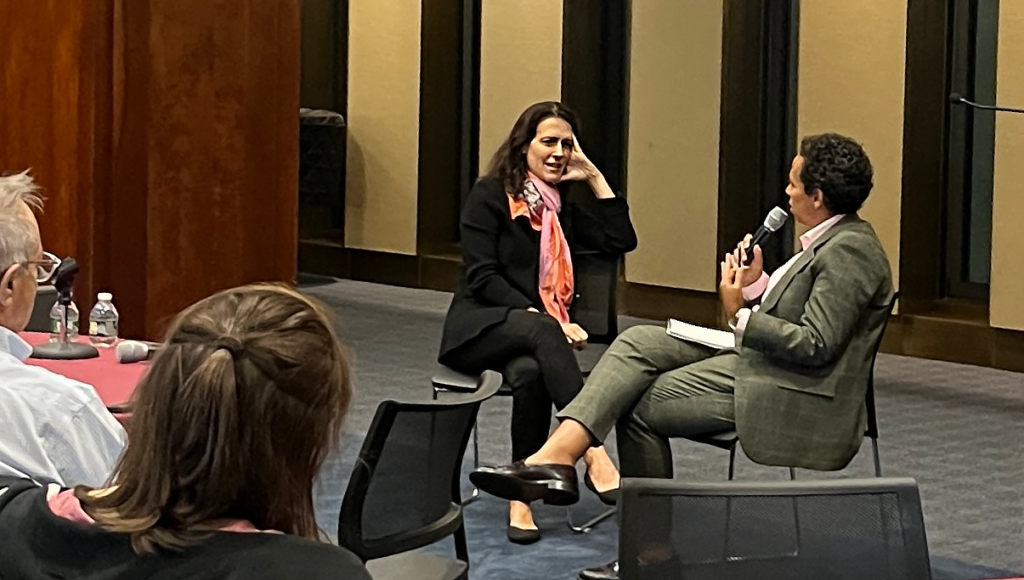A chat with Invisible Child author Andrea Elliott

Andrea Elliott’s close-up portrait of Dasani Coates, a girl growing up homeless in NYC, sent shock waves through the city when it first landed on the front page of the New York Times in 2013. Incoming Mayor De Blasio invited Dasani to his inauguration and vowed to do better by children like her; outgoing mayor Bloomberg defended his policies but added, “Sometimes some of us are lucky and some of us are not.”
Nearly 10 years later, an expanded version of the series made waves again as a book, Invisible Child, which won both a Pulitzer Prize and our own Goddard Riverside Stephan Russo Book Prize for Social Justice. But to Elliott, speaking at our Book Chat earlier this month at Fordham University’s Graduate School of Social Service, it’s also a tale we know well.
“The best stories are often the oldest stories, that have been hiding in plain sight,” she told moderator and Times colleague Lydia Polgreen. “We’re coming up on the 50th anniversary of LBJ’s War on Poverty so it’s a very old story.”
The book follows Dasani, her parents and her seven siblings for eight years, from a dilapidated 520-square-foot room in a shelter in Brooklyn to a similarly run-down rented apartment on Staten Island. In an ultimately heartbreaking twist, it also accompanies Dasani—whose school counselor writes that her intelligence is “uncanny” and her “thought content far surpasses peers her age”—to Pennsylvania’s Milton Hershey School, which serves children from low-income backgrounds.
Elliott wove herself into the fabric of the family’s life, going to shelters, schools, courts, city offices, sport practices, therapy and social events with them. Sometimes she slept on their floor alongside them. How did she gain their trust? “I think the way I got in was by stumbling, and in my many stumbles, showing my humanity,” she said, adding: “I don’t believe I ever arrived at this land called trust. It is never a given, it’s a constant work in progress.”
Her respect for the family is clear. From the very beginning, she said, “They struck me not as a vulnerable family or a group to feel sorry for, but actually a very powerful group of people,” They had a strength and poise that set them apart, she noted: “It was part of the culture of the family; you keep a united front on the street.”
Elliott struggled to understand and portray the city’s labyrinthine social service system. Dasani, though still a child, was her main ally in figuring it out: “Dasani helped me solve every puzzle. She showed me on the map what each of these places was — the Department of Homeless Services was Brooklyn, the Human Resources Administration was Queens. There’s this whole parallel map of New York City that’s not heard or felt or seen by millions of people,” Elliott concluded, but that is essential to the survival of people like Dasani and her family.
Dasani herself has escaped the system. She’s stably housed and in a stable relationship, according to Elliott; now a young adult, she has graduated from a home health aide program and is working. She hopes to finish college someday. All indications point to a brighter future ahead.
But according to the Coalition for the Homeless, the number of New Yorkers sleeping in the city’s homeless shelters is now 68 percent higher than it was ten years ago, when New Yorkers met Dasani. That means even more families are trying to navigate the rules and regulations of shelter life. It means even more children are growing up in precarious situations, facing dim prospects in life—paying a heavy price for societal inequities they had no hand in creating.